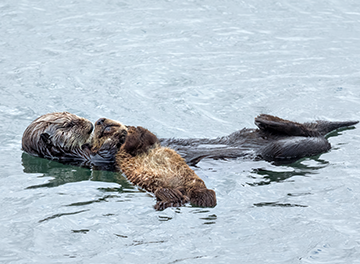
Chapter 1: Introduction

The Elakha Alliance and several partners supported this study to determine whether environmental, economic, social, legal, political, and other factors are suitable to successfully reintroduce sea otters to Oregon.
Renewed interest in possibly reintroducing sea otters to Oregon is motivated by several objectives:
- Restoring the various ecological functions of otters, a keystone species that used to be part of Oregon’s marine environment
- Restoring cultural relations between sea otters and human residents along Oregon’s coast
- Making it easier for otters to survive potential catastrophes, such as oil spills, by more broadly distributing populations on the Pacific coast
- Improving the gene flow between northern sea otters in Washington and British Columbia and southern sea otters in California

Chapter 1
- Background
- Reintroduction vs. Translocation
- The Goal of the Feasibility Study
- Contents of This Study
The feasibility study is intended to provide the Elakha Alliance, relevant state and
federal agencies, stakeholders, and the public with the best available information and analyses to guide future considerations of:
- the long-term survival and success of source populations and newly established ones
- the suitability of different habitats and the potential for positive and negative effects on the ecosystem
- social and economic impacts, both positive and negative
- administrative and legal requirements
- logistical constraints and steps for implementation
It is also important to emphasize what this study is not: Specifically, it is not intended to be a definitive statement about whether reintroducing sea otters to Oregon is advisable or, indeed, whether it is possible from all perspectives. Instead, it provides a comprehensive source of pertinent information, history, and the best available science, making it readily available to wide range of stakeholders, resource managers, and decision-makers.
Key Terms
Click on the following key terms used on this web page to see their definitions on the glossary page:
Learn More
- Chapter 1 – Intro
- Chapter 2 – Prior History
- Chapter 3 – Population impacts
- Chapter 4 – Genetic considerations
- Chapter 5 – Ecosystem effects
- Chapter 6 – Habitat suitability
- Chapter 7 – Socioeconomics
- Chapter 8 – Admin/legal issues
- Chapter 9 – Logistics
- Chapter 10 – Health & welfare
- Chapter 11 – Stakeholder issues
- Chapter 12 – Conclusions
- Appendices: ORSO app, maps


